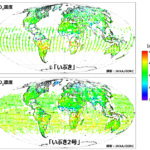2019/11/27 アメリカ合衆国イェール大学

・ イェール大学が、電気で CO2 と水をメタノールに変換する分子触媒を開発。
・ 新技術は、産業で有用な揮発性の液体燃料であるメタノールの生成と、大気中の CO2 除去という二つの化学的課題に対処。メタノールは不凍液、塗料用シンナー、ガラスクリーナーをはじめ、バイオディーゼル燃料、プラスチック、合板、衣料のパーマネントプレス加工等、様々に使用されている。・ 同新触媒は、液体電解質で作動する固形触媒で、その活性部位が分子構造であることから、不均一分子触媒と呼ばれる。
・ 同触媒では、コバルトフタロシアニン(またはその誘導体)の個別分子がカーボンナノチューブの表面に固定される。同ナノチューブは電子のハイウェイのような役割を担い、電子を触媒部位に迅速かつ連続的に供給して CO2 をメタノールに変換する。これは、CO2 の 1 分子に 6 電子を注入する、電子還元プロセス。
・ 従来技術は、電子の伝達がより制限された、CO2 から CO への変換のような 2 電子還元プロセス。不均一分子触媒が、メタノールへの変換を可能にした。
・ 本研究には、主に米国立科学財団(NSF)が資金を提供した。
URL: https://news.yale.edu/2019/11/27/electron-highway-headed-methanol
(関連情報)
Nature 掲載論文(アブストラクトのみ:全文は有料)
Domino electroreduction of CO2 to methanol on a molecular catalyst
URL: https://www.nature.com/articles/s41586-019-1760-8
<NEDO海外技術情報より>
Abstract
Electrochemical carbon dioxide (CO2) reduction can in principle convert carbon emissions to fuels and value-added chemicals, such as hydrocarbons and alcohols, using renewable energy, but the efficiency of the process is limited by its sluggish kinetics1,2. Molecular catalysts have well defined active sites and accurately tailorable structures that allow mechanism-based performance optimization, and transition-metal complexes have been extensively explored in this regard. However, these catalysts generally lack the ability to promote CO2 reduction beyond the two-electron process to generate more valuable products1,3. Here we show that when immobilized on carbon nanotubes, cobalt phthalocyanine—used previously to reduce CO2 to primarily CO—catalyses the six-electron reduction of CO2 to methanol with appreciable activity and selectivity. We find that the conversion, which proceeds via a distinct domino process with CO as an intermediate, generates methanol with a Faradaic efficiency higher than 40 per cent and a partial current density greater than 10 milliamperes per square centimetre at −0.94 volts with respect to the reversible hydrogen electrode in a near-neutral electrolyte. The catalytic activity decreases over time owing to the detrimental reduction of the phthalocyanine ligand, which can be suppressed by appending electron-donating amino substituents to the phthalocyanine ring. The improved molecule-based electrocatalyst converts CO2 to methanol with considerable activity and selectivity and with stable performance over at least 12 hours.



